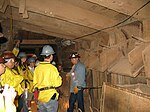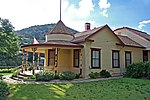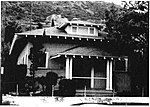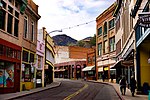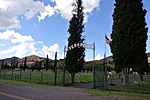Bisbee massacre

The Bisbee massacre (a.k.a. the Bisbee murders or Bisbee raid) occurred in Bisbee, Arizona, on December 8, 1883, when six outlaws who were part of the Cochise County Cowboys robbed a general store. Believing the general store's safe contained a mining payroll of $7,000, they timed the robbery incorrectly and were only able to steal between $800 and $3,000, along with a gold watch and jewelry. During the robbery, members of the gang killed five people, including a lawman and a pregnant woman. Six men were convicted of the robbery and murders. John Heath, who was accused of organizing the robbery, was tried separately and sentenced to life in prison. The other five men were convicted of murder and sentenced to hang. Unsatisfied with Heath's sentence, a lynch mob forcibly removed Heath from jail and hanged him from a telegraph pole on February 22, 1884. The other five men were executed on March 28, 1884. They were the first criminals to be legally hanged in Tombstone. The graves of the five murderers is part of the popular Boothill Graveyard tourist attraction in Tombstone.
Excerpt from the Wikipedia article Bisbee massacre (License: CC BY-SA 3.0, Authors, Images).Bisbee massacre
Main Street,
Geographical coordinates (GPS) Address Nearby Places Show on map
Geographical coordinates (GPS)
| Latitude | Longitude |
|---|---|
| N 31.4417 ° | E -109.9159 ° |
Address
Cafe Roka
Main Street 35
85603
Arizona, United States
Open on Google Maps

